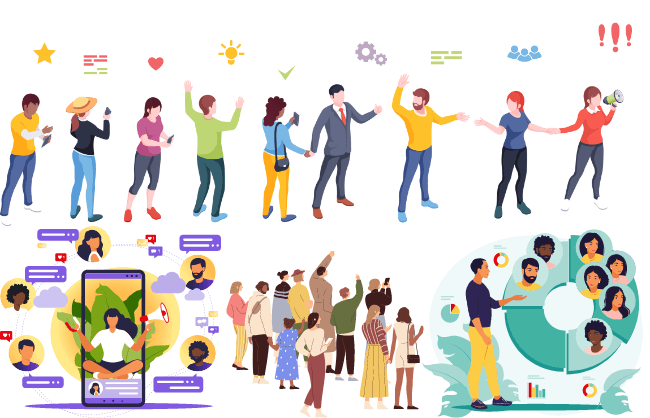Get to Know Your Target Audience
This post may contain affiliate links, which means we may receive a commission, at no cost to you, for purchases made using our links. Please see my disclosure to learn more. Unless otherwise stated, all prices are in US$.
Define Your Target Audience aka Spy Games: Unmasking the Secrets of Your Audience Ninjas
- Why is it important to know your target audience?
- What is a target audience?
- Identify your Niche
- Buyer Personas
- Analyze Data
- Segmentation
- Understand Pain Points
- Creating Content
- A/B Testing
- Grow Slowly
- Personalize & Automate
- Building Trust
- Final Thoughts
- UP NEXT
Why is it important to know your target audience?
By now, you know that building an email list is like having a secret weapon in your marketing arsenal. It’s a powerful tool that allows you to connect directly with your audience and make a lasting impression. But here’s the thing – you can’t just blast out emails and hope for the best. To really make an impact, you need to define your target audience accurately. Lucky for you, I’ve got the inside scoop on how to do just that!
What is a target audience?

Identify your Niche
First things first, you need to identify your niche. What’s a niche, you ask? Well, it’s basically the fancy term for the specific area in which your business operates. Do some market research, check out your competitors, and analyze those market trends. This will give you a good idea of who your potential customers are and what they’re all about.
Buyer Personas
Once you’ve got a handle on your niche, it’s time to create some buyer personas. Now, don’t worry – buyer personas aren’t real people. They’re more like fictional characters that represent your ideal customers. To create these personas, gather data and do some surveys, interviews, and social media stalking (we mean listening). Find out what makes your audience tick – their motivations, interests, and pain points. The more you know, the better you can connect with them.
Analyze Data
But wait, there’s more! If you already have some customers, take a peek at their data. Look for patterns and preferences. Figure out which products or services are a hit and why. This will help you refine your target audience even further and tailor your email campaigns to perfection.
Segmentation
Now that you know who you’re targeting, it’s time to get a little fancy with segmentation. What’s segmentation, you ask? Well, it’s the magic trick of dividing your email list into smaller groups based on specific criteria. This way, you can send personalized content that really speaks to each group. Trust us, people love feeling special, and they’re more likely to engage and convert when they get content that’s just for them.
Grab Attention
Understand Pain Points
But here’s the real secret sauce – understanding your audience’s pain points. What’s keeping them up at night? What problems are they trying to solve? By addressing these pain points in your emails, you’ll grab their attention and make a real connection. It’s like giving them a virtual high-five and saying, “Hey, I get you!”

Creating Content
Now that you know what makes your audience tick, it’s time to put pen to paper (or fingers to keyboard) and craft some killer content. Speak their language, use their lingo, and make it personal. Show them that you understand their struggles and that you’ve got the solutions they’ve been looking for. Personalization is the name of the game, my friend.


A/B Testing
But don’t just take our word for it. A/B testing is your new BFF. It’s all about experimenting with different elements of your email campaigns to see what works best for your audience. Try out different subject lines, call-to-action buttons, and email formats. It’s like playing dress-up with your emails, and the best part is that you’ll get real data to back up your decisions.
Grow Slowly
Now, we know it’s tempting to take shortcuts, but trust us when we say that growing your email list organically is the way to go. Sure, you could buy some email lists, but those subscribers might not be all that interested in what you have to offer. Instead, focus on creating lead magnets, using opt-in forms, and offering incentives to get people excited about subscribing to your list. Quality over quantity, my friend.
Personalize & Automate
Personalization is still the name of the game, and automation is here to make your life easier. Use those buyer personas and segmentation data to personalize your emails. Address subscribers by their names, recommend products based on their past purchases, and send content that aligns with their interests. And hey, automation tools are like having a personal assistant who sends timely and targeted emails based on subscriber actions. It’s like magic!

Building Trust
Last but not least, building relationships and trust is key. It’s not just about promoting your stuff – it’s about offering value, insights, and exclusive offers. Show your audience that you genuinely care about their needs and feedback. By building trust and credibility, you’ll create a loyal customer base that can’t wait to see what you send next.
Final Thoughts
So, there you have it – the essential steps to define your target audience for email list building. It may seem like a lot of work, but trust me, it’s worth it. By understanding your audience and speaking their language, you’ll see higher engagement, more conversions, and ultimately, business success. Now go forth and get to know your audience!







Comments are closed.